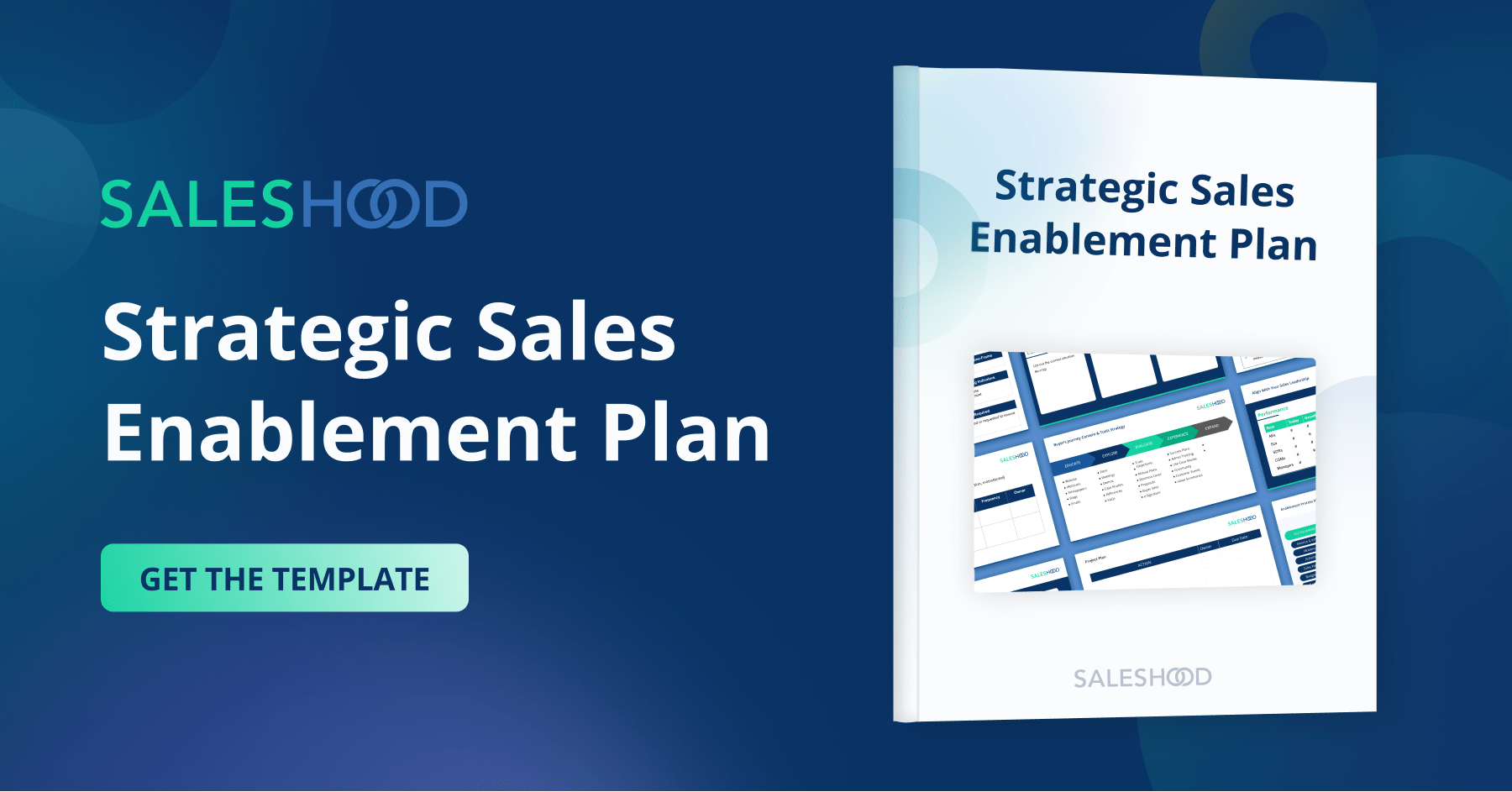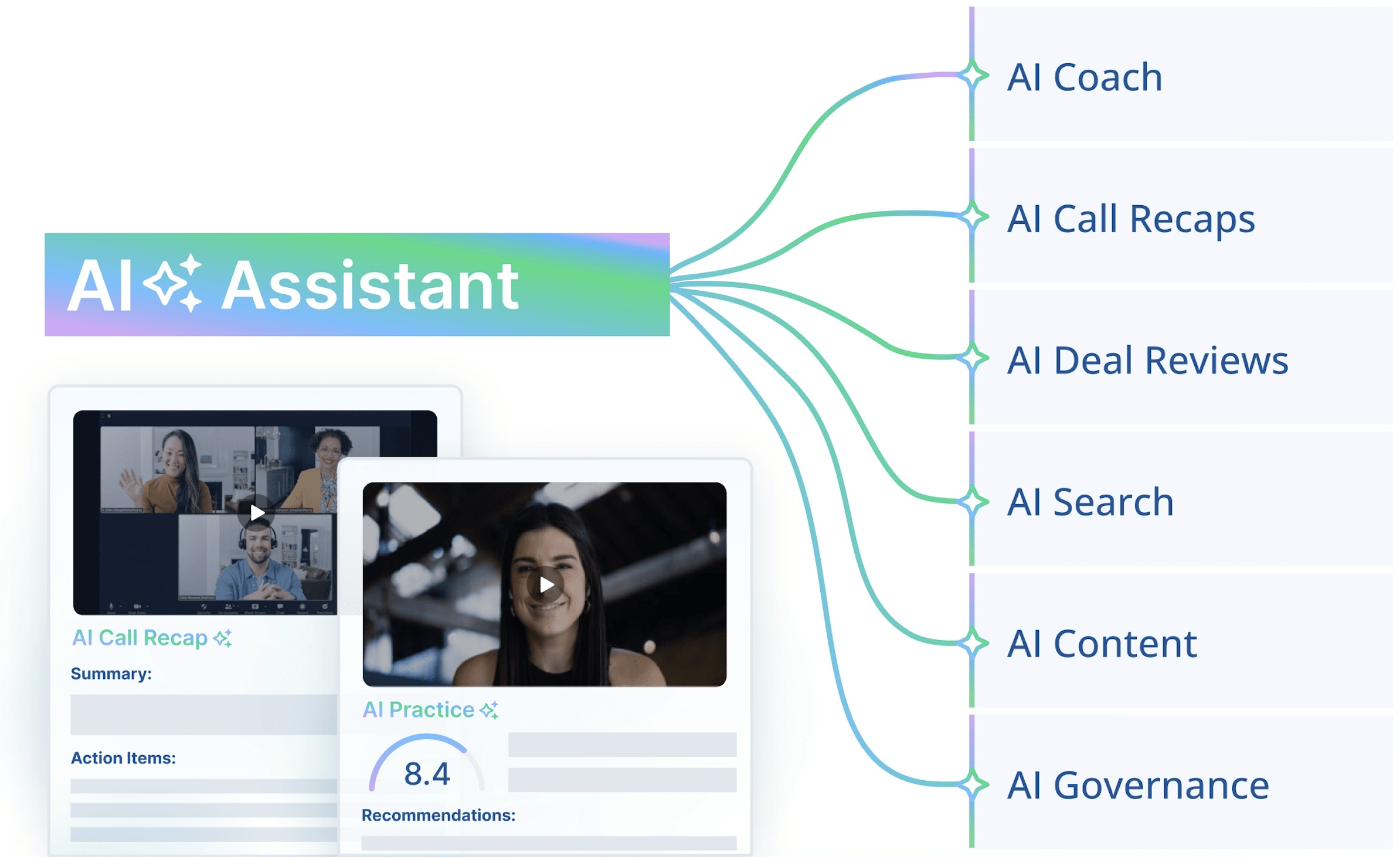The following is a summary of the Enabling Managers to Coach with Data webinar hosted with Caitlin Lambert, from RingCentral. Take a look at how combining coaching with data can be the secret sauce you need to foster a motivated, sales-driven team and culture. When managers sit down with their team, especially new hires, to discuss their performance, there’s an opportunity to provide coaching. But what happens when the coaching lacks the appropriate data to help drive the conversation? If you’re not aware of all the relevant productivity metrics, it’s difficult to know how to help. This will have a significant impact on sales performance, and on the morale of your team. That’s part of the driving force behind RingCentral’s implementation of data-driven coaching, designed to facilitate productive conversations between sales managers and their teams. Their vision needed significant system, process and data changes to become a reality. RingCentral decided to focus on a manager coaching program for three quantifiable reasons:
- Reduce attrition saving an estimated $2M cost per seller
- Help teams makes their number
- Improve employee engagement and satisfaction
The Cost of Sales Attrition
Consider the cost of losing a key sales rep, and you’ll understand why it’s so important to avoid turnover whenever possible. At RingCentral, for example, there’s a $2 million price tag for losing one of their enterprise sales reps. These costs quickly add up when you consider the full picture:
- Recruiting
- Onboarding
- Goal attainment
- Quotas
- Brand lost
- Territory uncovered
When you empower reps with the relevant and timely coaching they need to do their jobs more effectively, you’re less likely to lose them. They will feel appreciated. Salespeople are more likely to stay if they have a manager who is coaching them, developing them and helping them make their number.
Defining What Good Coaching Looks Like
When RingCentral set about pairing coaching with data, they found they needed to first define what coaching is. Sales coaching cultures across organizations are different. Even if someone has a lot of experience in the field, it may be difficult for them to reach their full potential and effectivelly coach their team. RingCentral’s enablement team worked closely with their front-line managers to define what good coaching looked like. This ultimately created buy-in to the process and doing more coaching. RingCentral defined coaching as: “An ongoing set of intentional and scheduled 1:1 interactions between a manager and their direct report for the designed purpose of development and performance.” From there, there was another challenge to contend with: the pandemic. They had to address what coaching looks like in a remote world that requires a different kind of connection. Without the benefit of body language and subtle in-person cues, they needed to create more structure around coaching. After considering it, leadership and RingCentral came to the conclusion that remote sales coaching required two primary things:
- More defined coaching topics, with managers focusing on one topic at a time.
- More defined metrics to enable managers to coach more effectively.
By implementing these things, they were able to develop a culture of coaching at RingCentral for their remote workforce. They tailored their sessions, and used individualized data as a guide. They developed a program that was intentional, high impact and designed to improve performance. Coaching was not designed to pull up Salesforce and inspect data hygiene. Rather, it was designed to have coaching conversations about the data. They shifted from information gathering to real coaching connections, by using data more effectively in their conversations. The result? Happier account executives who have a clear picture of what they’re doing well and how they can improve and more effective front-line managers.
Create Consistent Coaching With Structured Topics
RingCentral did a great job creating a consistent coaching experience by introducing coaching topics. The front-line managers were enabled to understand and implement these coaching conversations with their teams. The topics ranged from appreciation to listening to empathy and to motivation. Managers were reminded of the need to focus on appreciating their team members. Given folks are remote and not coming together, having appreciation conversations help build better relationships and trust between managers and their team members. Managers were also given examples of how to coach by seeing managers role-play and practice. It’s great to see how top managers model the right coaching behaviors by asking questions, appreciating their team and showing empathy. Peer-to-peer learning between managers is a great way to accelerate coaching impact. RingCentral implemented a “One-On-One Prep Sheet” allowing a manager to gather important data about a new hire in terms of onboarding, quota attainment and performance, and other factors. Using the information on this sheet, managers can then determine the purpose statement or focus of the coaching session. The experience was much richer for their team members with this prescriptive coaching guidance. The Prep Sheet led to creating overarching coaching topics, such as “appreciation styles.” Managers and their teams were able to better understand how to coach and show appreciation for different personality types. Then, the managers used SalesHood to close the loop and collect feedback on the topic. Through a monthly coaching huddle, managers have the space to collaborate and share best practices for coaching employees. We’ll discuss more on this in the next section.
Using SalesHood To Reinforce and Measure Coaching
Whether your company has switched to remote work, a hybrid model, or even back to in-person work, it’s clear that the pandemic has brought about the need for new coaching techniques and collaboration among managers. Figuring out how to not only make meaningful changes but get everyone on board can be tough. This is where having the right tools in place to support your efforts can be the key to success. At RingCentral, for instance, managers who previously got together frequently for off-sites or dinners had to get creative in the absence of live interactions, where they were able to learn from one another. Within SalesHood, they re-created collaborative spaces where managers could share different coaching scenarios and knowledge. These spaces are called Huddles and SalesHood executes them efficiently and at scale. The important note here is that the team could realize the value of adding additional resources and methods to support their managers as they found their way. They didn’t have to figure out how to put these changes into practice on their own. RingCentral also used SalesHood to check on the manager’s coaching progress. A monthly coaching activity assignment was set up in SalesHood where managers were asked to share the following:
- Who did you coach?
- What did you coach them on?
- What was the feedback?
With this simple enhancement and addition to the process, we were able to quickly figure out who was doing it best and asynchronously have a place for managers to share best practices and learn from each other.
Systems And Data To Scale
RingCentral invested the time to bring the data together with the coaching frameworks. They married the art of coaching with the science of data. This is how they created a quantitative assessment for the areas of coaching opportunities for front-line managers. With a goal of enabling managers to coach with data, RingCentral advanced these goals by creating new-hire metrics dashboards to be used by leaders and their teams. By pulling together data from SalesHood, Salesforce, and Xactly, the dashboards provide detailed analytics that managers turn into coaching conversation and opportunities. In other words, these dashboards provide a comprehensive look at the success of a sales new hire during their ramping period. Managers use the data gathered to evaluate new hires based on three key metric areas:
- Onboarding Participation: The percentage of new hires who have completed all training modules and attended live events.
- Role-Based Activity And Outputs: Metrics criteria choses according to roles
- Quota Attainment: Quantitative data that shows performance in relation to target goals.
While the metrics might vary from role to role, the system can be universally applied. The dashboard provides a quantitative assessment of leading and lagging metrics, specific to the individual and their responsibilities. So rather than walk into a one-on-one with a vague idea of the data behind a new hire, managers have clear metrics that they can pair with a coaching topic. Say, for example, the coaching topic is “appreciation,” and an account executive’s personality test reveals that they like words of affirmation as a form of appreciation — then the manager can use that information to offer praise during the coaching session and relate it to new hire ramping success metrics and data. Here’s the full list of metrics that matter most for new hire onboarding at RingCentral:
- Learning Path Completion
- Average test scores
- Live event attendance
- Quota attainment metrics – current bookings amount
- Quota attainment metrics – current bookings goal %
- Quota attainment metrics – time to 100% first month quota
- Quota attainment metrics – time to 100% quota
- Win rates
- Deal size
- Activity – Time to opportunity creation
- Activity – Time to first closed won
- Activity – # opportunities
- Activity – Sales by product
- Activity – Mutual plans created
- Activity – Opportunity completion
Supporting Resources For Front-Line Managers
Besides the reports, dashboards and coaching huddles in SalesHood, RingCentral created a number of resources and tool guides to help front-line managers be successful. The managers loved the program and were extremely grateful for the detailed resources they were provided. The list includes:
- Navigation guides for all systems
- Metrics definitions
- Coaching FAQs
- Coaching playbook
Here’s a quote from a front-line manager at RingCentral
“I use the dashboard to prepare for coaching sessions & see who could use some additional “how to do business at RC” as well as benchmark one new hire vs another or to my existing team to further accelerate effectiveness in the field.”
Summary
Sales can be a tough business, but it’s made much easier when you have the numbers and the visibility into what’s really going on. This allows you to spot issues before they become bigger, and also to see what’s working so that your reps can double down. Beyond that, when you’re able to walk into coaching sessions arm with data, you can more easily address areas of strength and areas for potential growth. These focused, data-driven one-on-ones are likely to be more productive than they would be if you simply went into a meeting without any metrics to support your coaching suggestions. At RingCentral, pairing coaching with data has dramatically changed the culture, to the point where people look forward to coaching sessions. The support of a manager who took the time to prepare, coupled with the clarity of key metrics, has proved to be the winning formula for productivity, new-hire engagement, and greater happiness overall. If you’re interested in watching the full webinar you can watch it here.
More Sales Coaching and Enablement Resources
Looking for more expert insights on sales coaching? Check out these pieces of content from our team next. Sales Coaching Guide for Sales Managers Blog Sales Process Coaching & Content Webinar Enabling Managers To Do High Impact Coaching Video Sales Enablement Leadership Course



